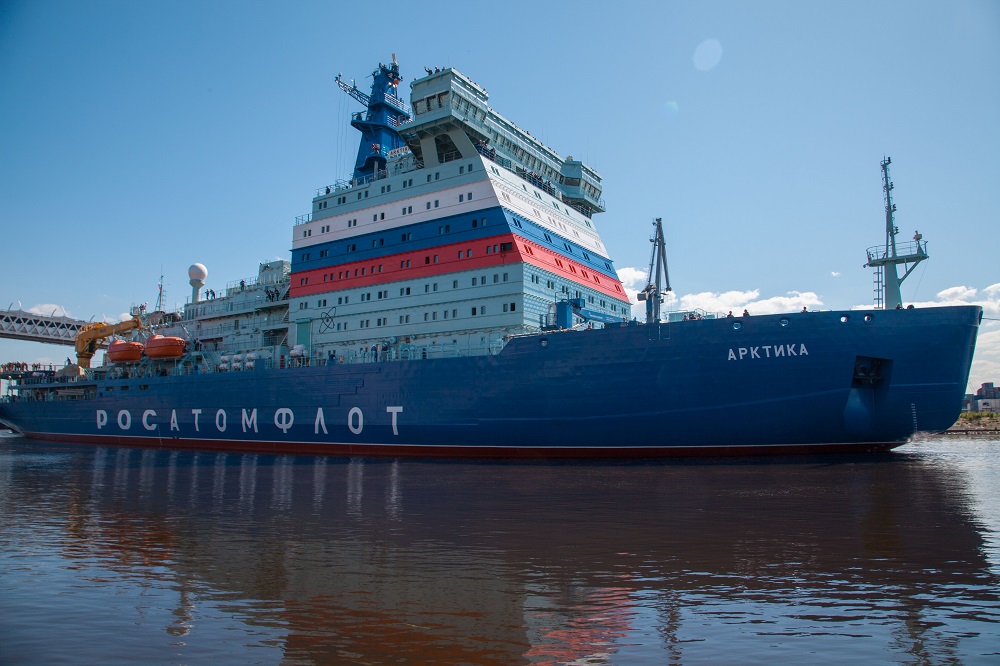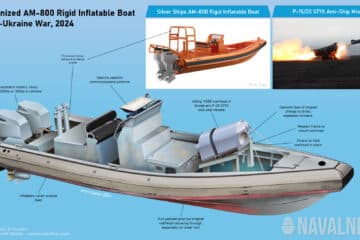By TASS Russian news agency
From June 23 to September 16, shipbuilders, representatives of the customer and contractor companies checked the operation of the ship’s mechanisms and equipment in the Gulf of Finland and the Baltic Sea.
During the sea trials, the ship’s power supply system and maneuverability depending on the draft were tested.
“The program of the sea trials has been fully executed,” CEO of the Atomflot Company Mustafa Kashka said.
“Large-scale work has been carried out by the shipbuilders, contractor companies, and the crew. We are satisfied with the results. The Arktika nuclear-powered icebreaker is ready to sail to Murmansk,” the press office added.
On September 22, the icebreaker will leave the Baltic Shipyard’s outfitting quay for Murmansk. The cruise is planned to last about two weeks. During that period, the operation of the nuclear-powered icebreaker in ice conditions will be tested.

The Project 22220 nuclear-powered icebreaker can lead groups of ships in 2.8 m Arctic ice. The dual-draft design allows the icebreaker to operate in Arctic seas and in Polar river deltas.
The icebreaker will operate in the western part of the Arctic, namely, the Barents, Pechora and Kara Seas, in shallow areas of the Yenisei River’s outlet and the Gulf of Ob.
The Arktika was laid down in November 2013 by the Baltic Shipyard. The first serial Sibir icebreaker was laid down in May 2015 and the second serial Ural in July 2016. The icebreaker has a displacement of 33,540 tons, a length of 173.3 meters, a width of 34 meters, a minimum draft of 8.65 meters, a full draft of 10.5 meters, and a height of 52 meters. The two-reactor nuclear powerplant RITM-200 has a 175 MW capacity. The speed is 22 knots. Maximum ice thickness in uninterrupted motion is 2.8 meters. The crew totals 75.






